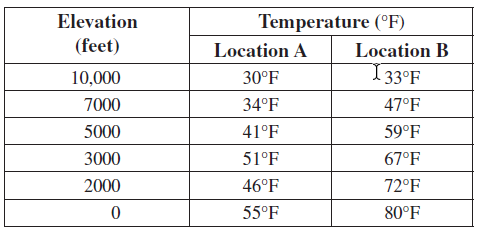During the Japanese Tsunami, the seafloor was thrust up 5 m to 8 m (16 feet to 26 feet).
Answer the following statement true (T) or false (F)
True
You might also like to view...
A parcel of air with an initial temperature of 80°F begins to rise in Location B. The LCL of the parcel is 4000 feet. With a red (or labeled) line, carefully draw the temperature decrease of this parcel of air as it rises to 10,000 feet. Be sure to consider the LCL, and the DAR and SAR.


(a) Will this parcel of air begin to rise from the surface on its own? Why?
(b) Does the stability of this parcel change with increased elevation? If so, at what elevation does this change occur?
(c) How would the pattern of stability below 10,000 feet be different if the lifting condensation level was not reached until 9000 feet?
Canada gained a degree of independence through the British North America Act in
A. 1776 B. 1789 C. 1800 D. 1867
Although we don't know for sure, changes in the strength and orientation of earth's magnetic field are most likely due to
A) fluctuations in outer-core convection. B) variations in sea-floor spreading rates. C) the total number of mantle hot spots. D) changes in the velocity of subducting plates.
The teeth in odontocetes are made of baleen
Indicate whether the statement is true or false